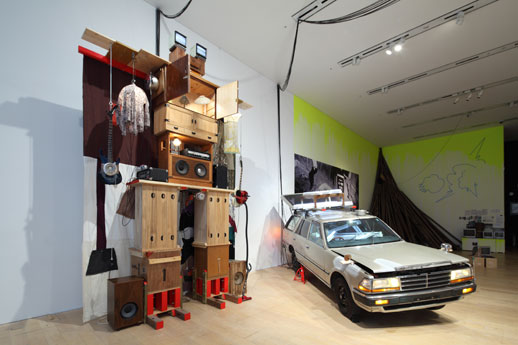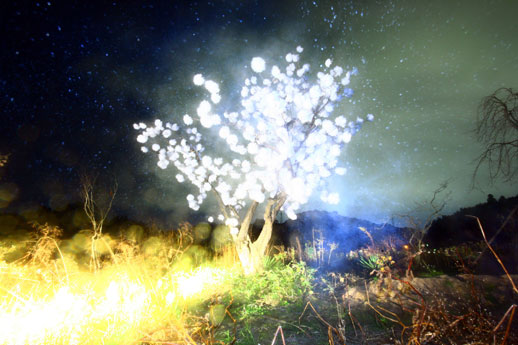Paintings Now Are Garbage
There is not a single painting at “Roppongi Crossing 2010”. The only pieces that come close are the spray paint graphics of Hitotzuki’s ‘The Firmament’ (which doubles as a skateboard ramp) and a patch of wall adorned with the tags of an anonymous graffiti artist. In its absence, the still, silent (and ultimately transportable, storable and cohesive) canvas haunts the exhibition, itself brimming with multimedia (and multi-sensory) installations, delicate craftworks, and social commentary.
Asked by a member of the audience at Cross Talk if this was a conscious choice, the curatorial team (made up of Mori Art Museum Associate Curator Kondo Kenichi and guest curators Chieko Kinoshita and Kenji Kubota), explained: in narrowing the artists from eighty to twenty, they felt the painters initially considered reflected less the themes chosen for the exhibition.
Five themes had in fact guided the selection of artists, selected to represent the next wave of Japanese artists at the third edition of “Roppongi Crossing”: “creativity of genre crossing,” “aesthetics of the new generation,” “significance of collaboration,” “expression of the street,” and “reference to the society.”

With this framework, the curators hoped to project a kind of synergy of multiple creative fields (including music, architecture, and design) that would go beyond the sum of the assembled works. Moreover, they expressed a desire for the exhibition to resonant with something — some scene, some artistic community, some life — existing beyond the white walls of the museum.
It was a diplomatic explanation, one that was cut short by political economist, social critic and Dean of the Kyoto University of Art and Design Graduate School Akira Asada, who unable to hold his tongue (he was scheduled to speak after the intermission), dashed to the stage and promptly proclaimed: “paintings now are garbage.” With both “VOCA” and “Garden of Painting – Japanese Art of the 00s” still being held at the time (at the Ueno Royal Museum and The National Museum of Art, Osaka, respectively) this declaration seemed particularly charged. Asada went on to opine that paintings were “easy commodities.”
Following these words (though they were those of guest speaker Asada and not the curators) it was hard not to feel the palpable absence of paintings at Roppongi Crossing as something akin to the specter of the highly sellable, iconic images of the Nineties —something that the twenty artists selected to participate at the Mori Art Museum show appear to be emphatically trying to shake.

Rebecca Milner
Rebecca Milner



